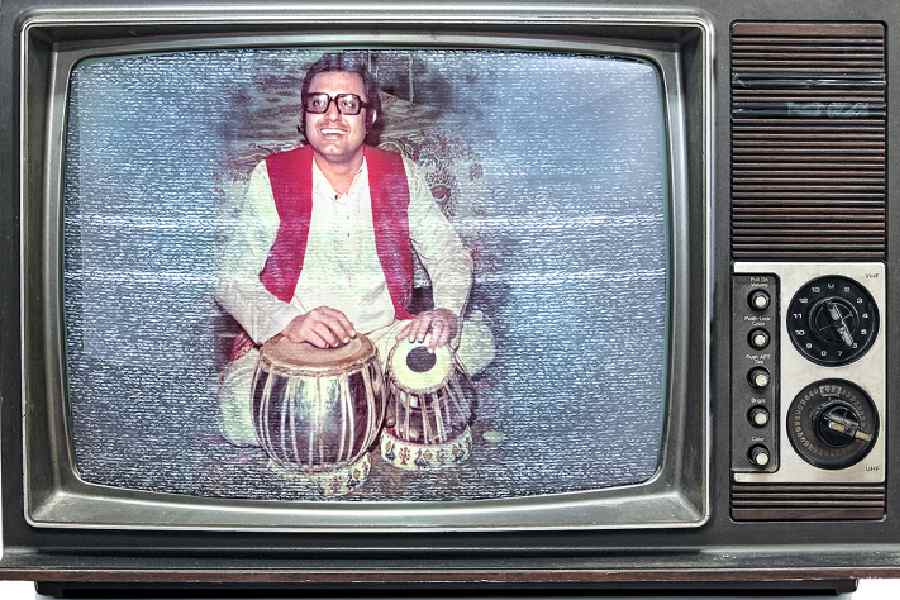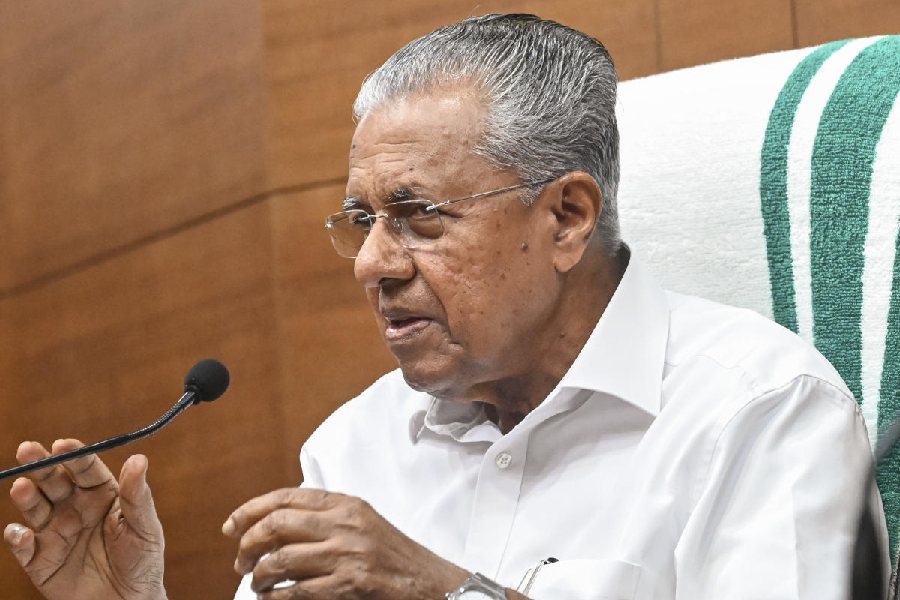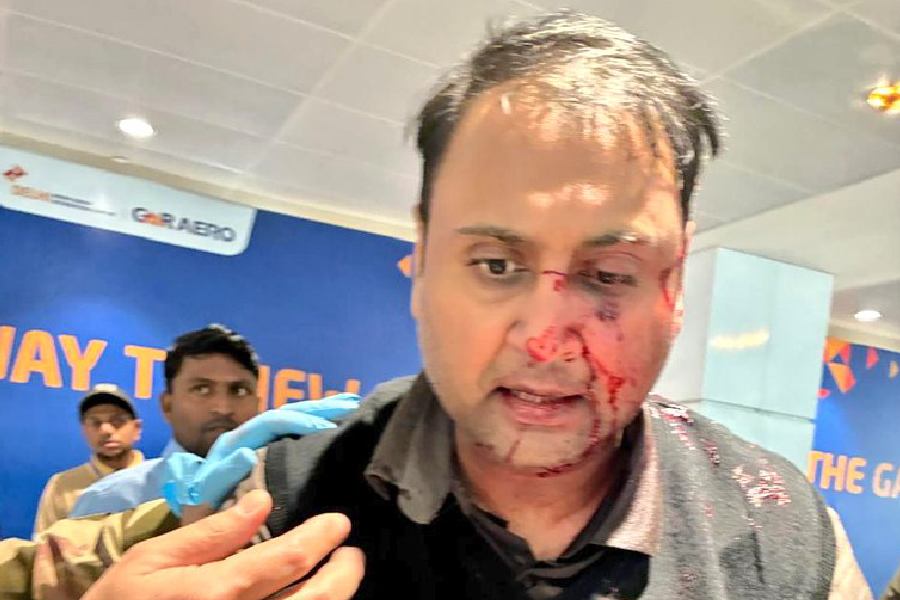Those who have seen him in his heyday will for sure remember him as the tabla player with thick spectacles, handsome sideburns and hair like the nimbus. In a televised interview of Pratima Bandyopadhyay with Hemanta Mukherjee, or Utpala Sen with Madhabi Mukherjee, he would be in the background. And when the celebrity artiste would break into a song or a bol, his flying fingers would set the tabla achatter and his dark locks would shake from side to side as it rained beats.
The day Doordarshan Bangla was launched — August 9, 1975 — Sanjay Mukherjee was on duty as a tabla accompanist for the inaugural event. “Those days, I was working as a casual instrument player at the All India Radio,” the 72-year-old tells The Telegraph.
Those days, contractual artistes were referred to as “casual” staff.
Mukherjee joined DD Bangla as a full-time employee in 1977. He continues, “Mira Majumdar and Satish Garg were the station director and the assistant station director at the time. They were well aware that viewers liked to watch my hair in action. I used to get numerous phone calls from women through the day. One day, just as I was about to enter the studio, I was asked to attend a call from my residence. I hurried out and took the call, but it was a stranger calling. She wanted to know the colour of the shirt I was wearing!” In 1977, colour television sets were yet to make their India debut.
DD Bangla’s first home was Akashvani Bhawan in central Calcutta but by the time Mukherjee joined, the office had shifted to Radha Film Studio in Tollygunge.
He says, “DD Bangla was different from AIR. The people at the radio station were more inclined towards music and entertainment. DD Bangla was not an entertainment channel. There were news bulletins, educational programmes, programmes on public health and something for farmers too. There were women-centric programmes such as Ghare Baire and there was Darshaker Darbare in which Chaitali Dasgupta and Saswati Guha Thakurta chatted about heritage, culture, food and other things. It was designed as an adda session.”
There were five full-time musicians on the staff of DD Bangla. Mukherjee says, “When there were no live shows scheduled, no recordings to be done, we five musicians composed musical tracks that could be played as title tracks for certain programmes.” He cites the examples of Pallisamaj, a programme on village life, culture, women’s issues, and children’s programmes such as Hore Koro Komba and Chiching Phank.
In 1986, the Doordarshan Kendra shifted to its new centre at Golf Green in south Calcutta where it stands now. “Life got busier when we shifted to this new building. This place is huge,” says Mukherjee.
Earlier, most of the programmes of DD Bangla were live telecasts as the infrastructure for recording was not well developed. But the new studio had advanced recording facilities. So, the musicians were always busy.
Mukherjee talks about “demise recordings”. They were recorded musical compositions played by way of tribute when a celebrity died.
In the new building, the number of studios were more, so live programmes became commonplace. As a tabla player, Mukherjee remembers how his job
suddenly became challenging. He says, “At times, my day would start at 10 in the morning and end at 6am the next day.”
Then adds, “I would first play alongside a classical musician, then go to the next studio to play with the sarangi player and then to another studio where some popular song by Dwijen Mukherjee was to be performed.”
New programmes were conceptualised. Mukherjee was required to organise a tabla programme for children. It was titled Tabla Bahaar. He recalls another programme which he had conceptualised. Different kinds of drums from across the country were played in that programme. He says. “Dhak, dhol, pakhawaj, khol, nagara… I had named it Taal Badya Baichitram. DD Bangla allowed us to explore, experiment and come up with such innovative ideas.”
Mukherjee has played with many artistes, so it is natural that he should have many stories. He talks about how most Rabindrasangeet artistes preferred just a theka or a gentle beat of the tabla, but Debabrata Biswas was an exception. Says Mukherjee, “In the middle of a programme he stopped and said ‘uraye bajao’, meaning, play full throttle. The same was true for Subinay Ray. He would say, ‘I don’t want a defence player as my tabla accompanist’.”
Mukherjee remembers how some of the musicians and singers wanted him and no other tabla player. Satinath Mukherjee and Utpala Sen were among them. “They would bring chicken tandoori from Park Circus for me and cajole me into eating it before I played.”
Mukherjee has played alongside Kanika Bandyopadhyay, Suchitra Mitra, Nirmala Mishra, Manabendra Mukhopadhyay, but when it comes to reminiscences, he seems to prefer to recount his experiences of working with the classical singers.
He rattles off the names, “Girija Devi, Bhimsen Joshi, Rashid Khan, Radhika Mohan Moitra, Ghulam Mostafa Khan, V.G. Jog, Ajoy Chakrabarty, M.R. Gautam, Vidushi Kalyani Ray.”
He says, “Pandit Ravi Shankar had suggested I work with him, travel abroad. But I chose to remain with DD Bangla, which was those days my financial backbone. Besides, they had bound me to them with an invisible thread of love and loyalty.”










